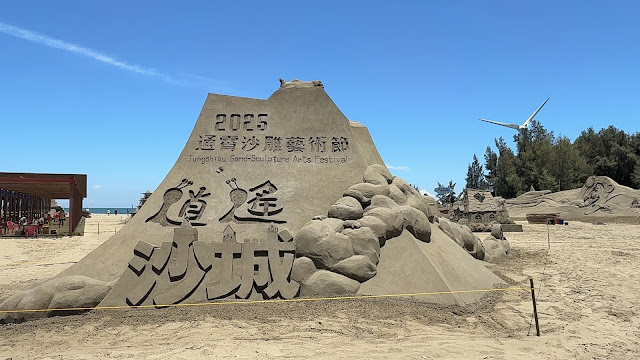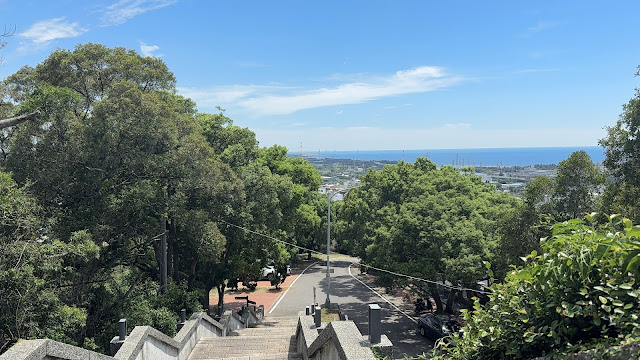Travel date: 2025/06/28
The sun beat down as we hopped on our scooter, a 45-minute journey ahead of us with a singular mission: to witness the early stages of the much-anticipated 2025 Miaoli Tongxiao Art Festival’s sand sculpture exhibition. The promise of impressive sandy creations lured us out into the scorching heat.
Our journey began with a brief detour to the famed Baishatun Mazu Temple. As expected, the temple grounds were teeming with devotees—a vibrant wave of people making their offerings. While I had hoped to peek inside and experience its revered atmosphere, the sheer volume of the crowd made it a task for another day. “Next time,” I promised myself, as we hopped back on our scooter.
Continuing our ride toward Tongxiao, the landscape unfolded before us. Excitement bubbled as we knew we were getting closer to our sandy destination. With the official festival still about two weeks away (kicking off on July 12th), we were curious to see the progress of the monumental sand sculptures.
Upon arriving at Tongxiao Beach, we were greeted by a fascinating scene. Several impressive sand structures were already taking shape, their intricate details hinting at the artistry to come. However, it was clear that the artists were still hard at work, with a few sculptures yet to reach their final form. It felt like a privileged sneak peek—witnessing the birth of these temporary masterpieces.
One of the highlights of the upcoming festival is the ambitious 70-meter-long, 5-meter-tall continuous sculpture—a first for Taiwan—created by a collective of eight international sand sculptors. The sheer scale of this project was awe-inspiring. In total, 22 works are expected to grace the beach this year, all under the theme of “Carefree Sand City,” promoting messages of sustainability and peace. The festival will run from July 12th until September 14th.
An unexpected perk of visiting before the official opening was the distinct lack of crowds. Last year, we were among bustling beachgoers during the festival. While perhaps not as widely known as the sand sculptures at Fulong Beach, the Tongxiao festival boasts a significant advantage: it’s completely free! We also noted the ample parking space, making it easily accessible by car. For those relying on public transport, Tongxiao even has a train station, adding to its convenience.
Of course, being at the seaside, we couldn’t resist a short walk along the beach. The sand was warm—or rather hot—beneath our feet, and we dipped our toes into the water, a welcome respite from the midday heat. However, with the sun directly overhead, the lack of shade encouraged us to seek out our next objective: lunch!
Our quest for food led us to a familiar spot from a previous visit. The taste was just as good as we remembered. Despite the small size of Tongxiao town and its limited dining options, this particular place was buzzing with locals and visitors alike—a sure sign of its popularity.
With our stomachs happily filled, we considered visiting the nearby Japanese shrine. However, we learned that it’s currently undergoing renovations, so we decided to save that for a future trip once it’s fully restored.
We took a short scooter ride uphill, seeking panoramic ocean views. There’s a small park to explore—perhaps not offering the most spectacular scenery, but it does provide a 360-degree panoramic view of Tongxiao.
As the day began to wind down, we started our journey back home to Toufen. We made a quick stop once more at Baishatun, this time simply to admire the vast expanse of the ocean. The sun was so strong it hurt my eyes, though. Before finally heading home, we made one last beach stop in Zhunan, enjoying the coastal breeze before concluding our day trip.
Our early expedition to Tongxiao Beach offered an exciting glimpse into the 2025 Miaoli Tongxiao Art Festival. With the festival being free and easily accessible, it’s definitely worth marking your calendars for a visit between July 12th and early September. We, for one, are looking forward to seeing the finished masterpieces and experiencing the full vibrancy of the festival!


































